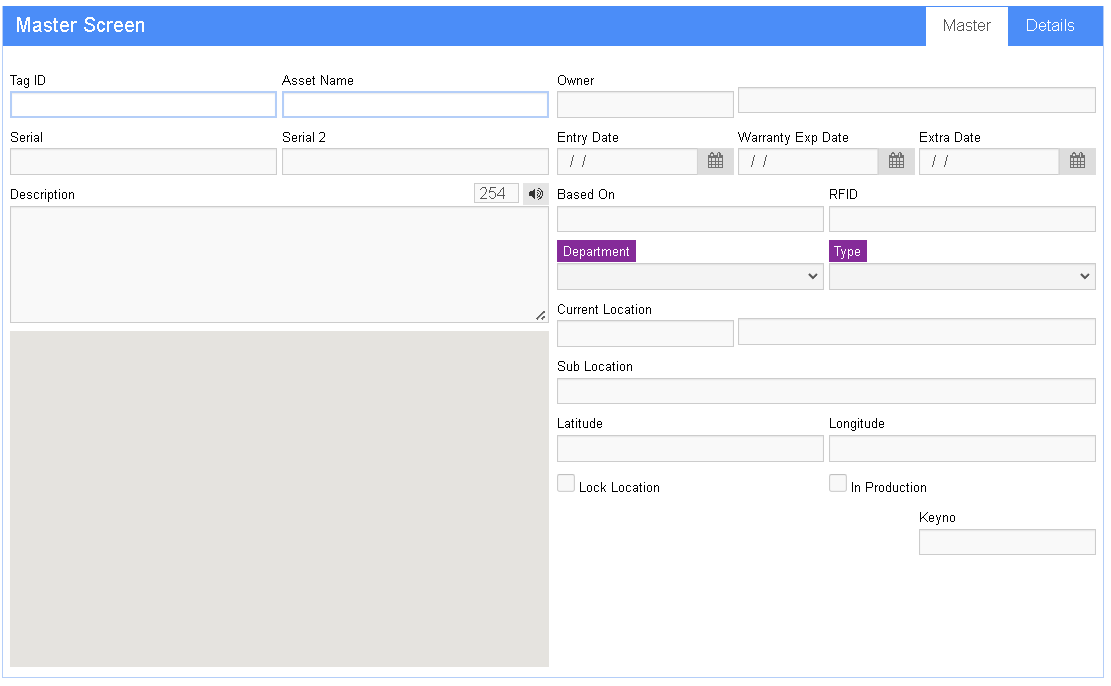Asset
From Adjutant Wiki
General Information
Default Menu Location: Maintain >> Asset Tracking >> Asset Information OR click the Assets icon in the toolbar.
URL: Asset_S.htm
Function: Setup and maintain information to track assets.
Master Tab
The first tab is used to add/edit/view assets.
The New Task button (green checkmark) will open the Task Master in Add Mode with the Asset and Current Location already filled out.
Fields/Filters
Asset Tag: Specific code for the asset
Name: Name of the asset
Owner: Owner of the asset
Serial: Serial number of the asset, if applicable
Seral2: Second serial number, if applicable
Entry Date: Enter the date the asset was entered into the system. This field will be populated by the system if the asset was received on a purchase order.
Warranty Exp Date: The date the asset's warranty will expire. This field will be populated by the system if the asset was received on a purchase order and the Warranty Length field is filled out in the Item Master.
Extra Date: Extra date field that can be customized to represent another date that needs to be tracked.
Description: Description of the asset (This field will be populated by the system if the asset was received on a purchase order.)
Based On: Select the item from the Item Master this asset is based on for billing. This field will be populated by the system if the asset was received on a purchase order.
Current Location: Current location of the asset (This is a Ship To record, this field will be populated by the system if the asset was received on a purchase order.)
RFID Unique ID of the asset's RFID tag if it is part of Wireless Warehouse
Latitude: Automatically populated if appropriate software is loaded
Longitude: Automatically populated if appropriate software is loaded
Keyno Unique value used to identify an asset in the database
Details Tab
Details screen contains more information regarding the assets and their attributes.
PO Date: The date the asset's purchase order was received and the PO number
- This field will be populated by the system if the asset was received on a purchase order.
Inv Date/#/SO#: If the asset is sold, the invoice date, the invoice number, and the sales/work order number
- This field will be populated by the system if the asset has been sold and invoiced.
Sell Amount: Amount the asset was sold for (This field will be populated by the system if the asset was sold on a sales order.)
Disposal Type: Disposal type that was used to remove the asset from the company
In-Service Date: Date the asset was put into service
Business Use: Percentage the asset is used for business purposes
Life (Years): Depreciation lifespan of the asset
Attributes
- Click the Edit Attributes button to edit the attributes/properties of the asset
- Asset attributes are maintained in the Rule Maintenance screen by selecting Asset Properties from the drop-down menu
Resource: An asset that is used as a resource in task management
Depreciable Asset: An asset whose value is depreciated and tracked for accounting purposes
ECR: An asset that requires the tracking of engineering change requests and notices
Vehicle: An asset information on a vehicle


